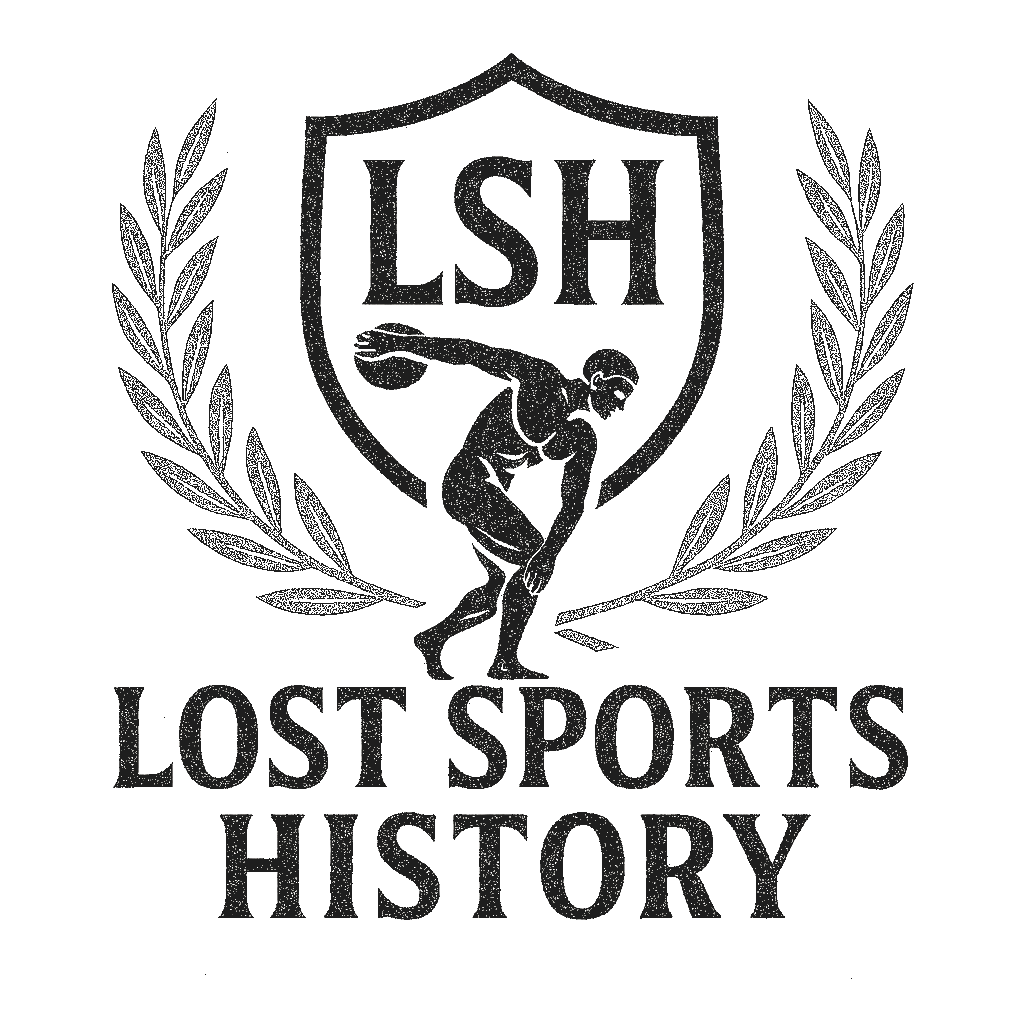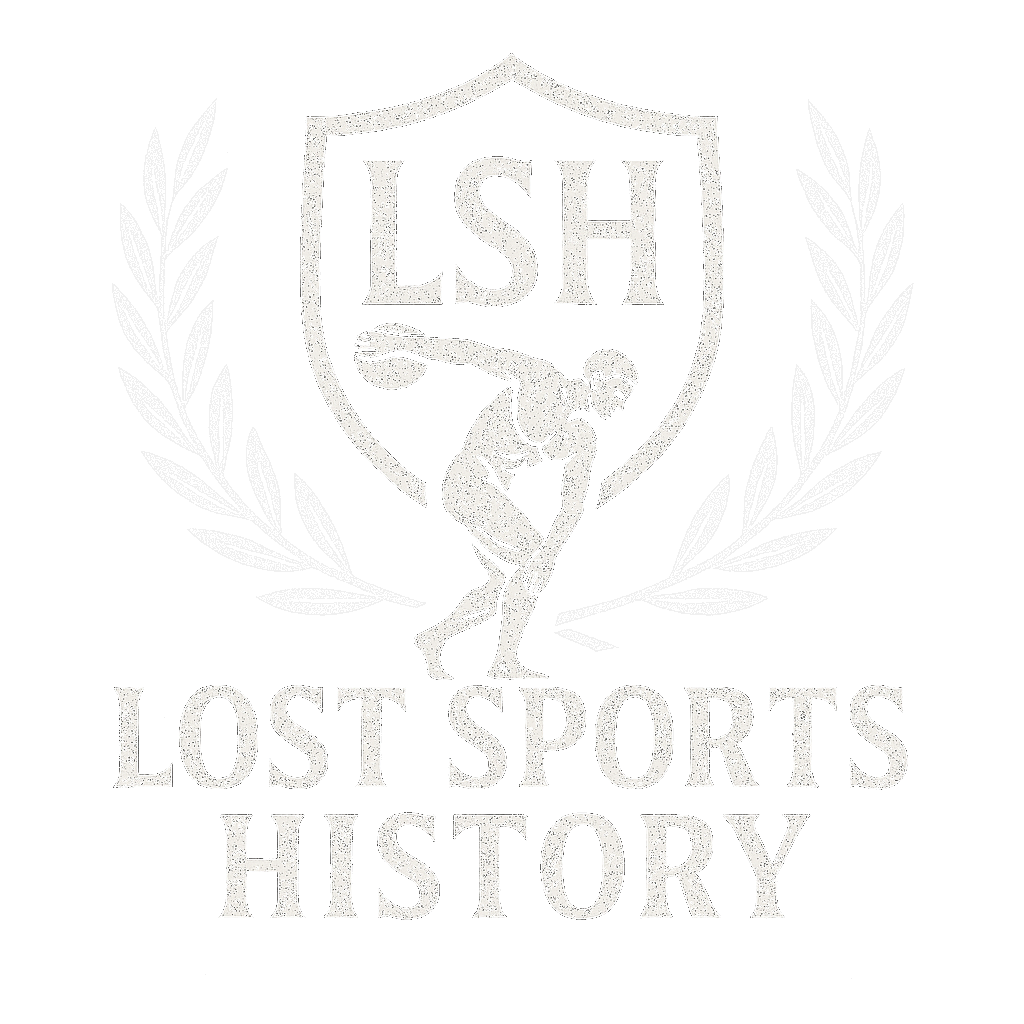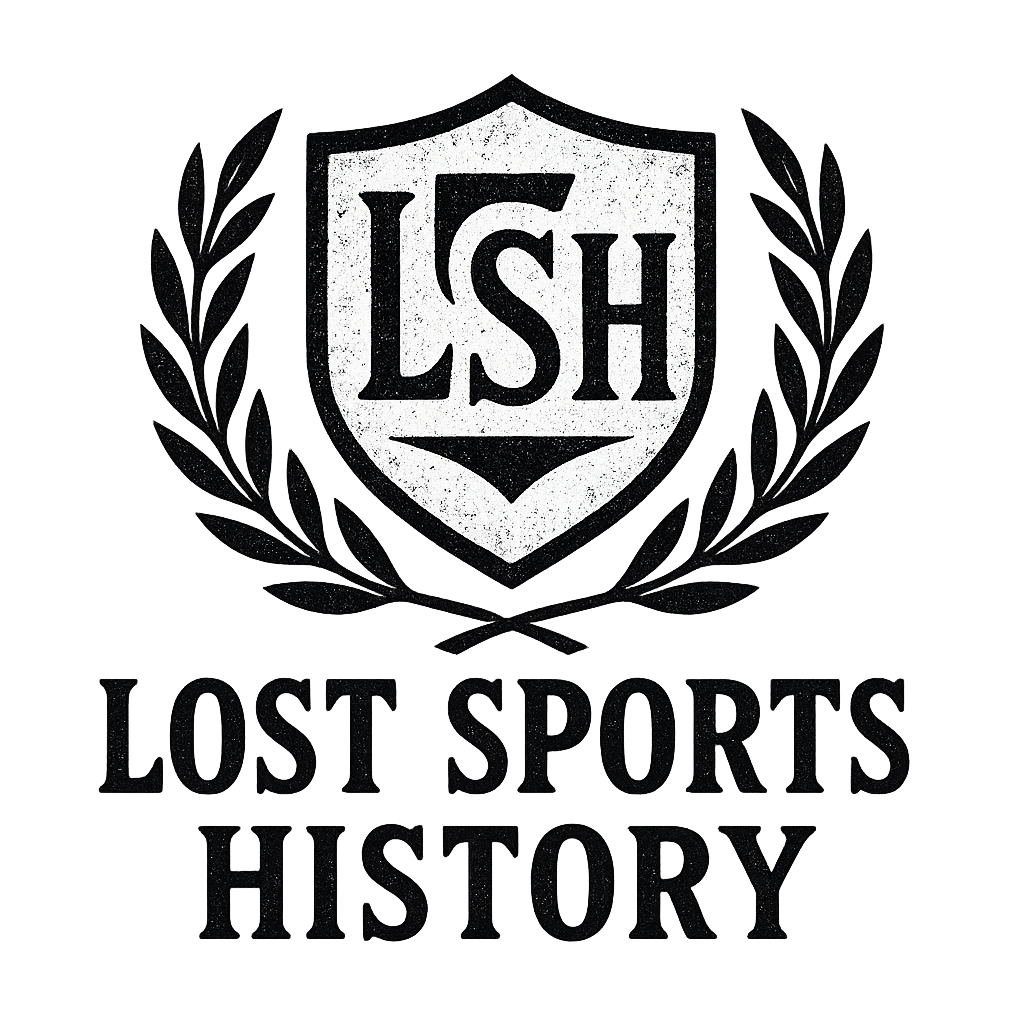Now Reading: 10 Ancient Sports That Inspired Today’s Olympic Games
-
01
10 Ancient Sports That Inspired Today’s Olympic Games

10 Ancient Sports That Inspired Today’s Olympic Games
The ancient Olympic Games are a testament to humanity’s enduring passion for athletic competition. Born in 776 BCE in Olympia, Greece, these sacred games united city-states in celebration of physical prowess and divine worship. Athletes competed not for gold medals, but for olive wreaths and eternal glory.
The first Olympic games featured just one event – a footrace. As the Olympic games and ancient sports evolved over centuries, they grew to encompass diverse competitions that tested strength, speed, and skill. These ancient contests laid the foundation for the modern Olympic movement, launched by Pierre de Coubertin in 1896.
The connection between ancient and modern Olympics runs deep:
- Athletic Excellence: Both celebrate the limits of human physical achievement
- Cultural Exchange: Games bring together people across different regions
- Sacred Tradition: Modern Olympics maintain ceremonial elements from antiquity
- Competitive Spirit: Ancient values of fair play and noble competition endure
The ancient sports that shaped today’s Olympic games reveal fascinating stories of human innovation and athletic development. From brutal combat sports to graceful displays of strength, these competitions capture the essence of athletic achievement that still resonates in our modern Games.
This exploration of 10 foundational ancient sports illuminates how classical athletic traditions live on in contemporary Olympic events. Their legacy shapes not just the competitions we watch, but our understanding of human physical potential and the timeless appeal of athletic excellence.
1. Stade (Footrace)
The stade is a key part of Olympic history, being the first and only event in the very first games held in 776 BC. This famous sprint covered a distance of 192 meters – the length of the stadium at Olympia. Athletes competed naked, their bodies oiled, racing on packed earth tracks under the scorching Greek sun.
The winner of the stade earned unparalleled glory, with the entire Olympiad named in their honor. Ancient records celebrate champions like Coroebus of Elis, the first recorded Olympic victor.
Modern Olympic sprinting events mirror this ancient tradition:
- The 200-meter dash closely matches the original stade distance
- Track surfaces have evolved from dirt to synthetic materials
- Starting blocks replace the simple stone grooves (balbis) used by ancient runners
- Electronic timing systems now measure results to thousandths of a second
The raw speed and explosive power demanded by the stade lives on in today’s 100-meter sprint, considered the most prestigious track event at the modern Olympics.
2. Diaulos (Double-Stade Race)
The diaulos was an evolution of the stade race, pushing athletes to go beyond just one sprint. This race covered a distance of 400 meters, requiring competitors to run the entire length of the stadium, make a sharp turn around a post (kampter), and then head back to the starting point.
Ancient Greek athletes faced unique challenges in the diaulos:
- Technical Mastery: The tight turn at the kampter demanded precise footwork and balance
- Strategic Pacing: Athletes needed to conserve energy for the return leg
- Surface Navigation: The sandy track surface required specialized running techniques
The diaulos is quite similar to modern 400-meter track events, although today’s athletes have the advantage of synthetic tracks and curved lanes. This ancient race laid the groundwork for middle-distance running, blending the explosive power of sprinting with tactical race management.
Modern Olympic middle-distance events still reflect the diaulos’s core principles of speed endurance and strategic running, making it a crucial link between ancient and contemporary athletics.
3. Dolichos (Long-Distance Race)
The dolichos was the ultimate test of endurance in ancient Greek athletics. This grueling race ranged from 7 to 24 stades – about 1,400 to 4,800 meters – making it the longest footrace in the ancient Olympic Games.
Intense Challenges for Athletes
Athletes competing in the dolichos faced intense physical demands:
- Variable Distance: Race lengths changed between different festivals and locations, challenging runners to adapt their training and strategies
- Track Configuration: Runners made multiple turns around the stadium track, requiring tactical positioning and careful pacing
- Extreme Conditions: Races often took place during the hottest part of the day on dusty tracks
Modern-Day Connection
The spirit of the dolichos lives on in modern Olympic distance events, particularly the 5,000-meter and 10,000-meter races. Modern distance runners share similar challenges with their ancient counterparts, including:
- Heat management
- Strategic pacing
- Mental fortitude
- Sustained cardiovascular endurance
The ancient Greeks believed the dolichos revealed an athlete’s true character through their ability to endure prolonged physical stress – a principle that remains central to long-distance running today.
4. Pentathlon (Combined Events)
The ancient pentathlon embodies the Greek ideal of a well-rounded athlete. This prestigious competition required mastery in five different events:
- Stadion: A short-distance sprint testing explosive speed
- Wrestling: A demonstration of strength and tactical skill
- Long Jump: Athletes used bronze or stone weights called halteres to increase jumping distance
- Discus Throw: An event demanding precision and power
- Javelin Throw: Combining accuracy with athletic strength
The legacy of the ancient pentathlon can be seen in modern Olympic multi-sport competitions. While today’s modern pentathlon features different events, it still upholds the fundamental idea of athletic versatility. This age-old tradition has also influenced other combined sports like the decathlon and heptathlon, where athletes must excel in various disciplines.

The Greek focus on overall athletic excellence continues to impact contemporary sports, encouraging athletes to develop a wide range of physical abilities instead of solely focusing on one event.
5. Wrestling (Ancient Sport)
Wrestling was a fundamental part of ancient Greek sports, highly regarded as a measure of strength, skill, and strategic ability. The sport originated from military training activities and held significant religious importance in ancient Greek society.
Styles of Ancient Greek Wrestling
Ancient Greek wrestling had two main styles:
- Orthia Pali (Upright Wrestling) – Competitors fought while standing, with the goal of throwing their opponent to the ground.
- Kato Pali (Ground Wrestling) – The match continued on the ground until one wrestler admitted defeat.
Victory in these matches required throwing an opponent three times, with their shoulders making contact with the ground. Athletes competed without clothing, covered in olive oil, which made it particularly difficult to maintain holds and required exceptional grip strength.
Evolution of Wrestling in the Modern Olympics
Modern Olympic wrestling still retains many techniques from ancient times but has also introduced standardized weight classes and refined rulebooks. Today’s competitions feature two distinct styles:
- Freestyle – This style allows holds below the waist and includes leg attacks.
- Greco-Roman – In this style, holds are restricted to above the waist, staying true to ancient Greek traditions.
The International Wrestling Federation enforces strict regulations for the sport. However, the fundamental principles of wrestling—such as leverage, balance, and strategic thinking—remain unchanged since its origins in ancient times.
6. Boxing (Pygmachia)
Ancient Greek boxing, known as pygmachia, was a raw and unfiltered display of combat prowess. Unlike modern Olympic boxing, ancient pugilists fought without rounds, weight classes, or protective gear.
The brutal nature of pygmachia reflected Greek values of courage and resilience:
- Fighters wrapped their hands in leather thongs (himantes) rather than padded gloves
- Matches continued until knockout or submission
- No rules against strikes to the face or head
- Clinching and grappling were permitted
The sport held deep cultural significance in Greek society, with legendary boxers like Diagoras of Rhodes achieving near-mythical status. Boxing matches drew massive crowds at religious festivals and Olympic events.
Ancient Greek art frequently depicted boxers, with notable examples found on ceramic vessels and bronze sculptures. These artifacts showcase the technical sophistication of ancient boxing stances and movements.
Today’s Olympic boxing maintains elements of its ancient predecessor while incorporating modern safety standards and regulations. The sport continues to embody the Greek ideals of skill, strategy, and physical courage that characterized pygmachia.
7. Pankration (No-Holds-Barred Combat Sport)
Pankration is one of the most brutal combat sports in ancient Olympic history. This fierce discipline combined wrestling and boxing techniques into a raw, unrestricted form of combat where almost anything went – except biting and eye-gouging.
Ancient Matches
Ancient Greek athletes engaged in matches that could last hours, ending only when a fighter submitted by raising their index finger or lost consciousness. The [archaeological evidence from ancient vases](https://www.metmuseum.org/art/collection/search/247950) depicts fighters using kicks, punches, joint locks, and chokes – techniques remarkably similar to modern mixed martial arts.
Influence on Modern Combat Sports
The sport’s influence resonates in today’s combat disciplines:
- Brazilian Jiu-Jitsu: Ground fighting techniques
- Mixed Martial Arts: Combination of standing and ground combat
- Vale Tudo: Brazilian full-contact fighting
The legacy of pankration lives on through the Ultimate Fighting Championship (UFC), where modern athletes showcase a similar blend of striking and grappling techniques. Military training programs worldwide have also adopted pankration principles, incorporating them into hand-to-hand combat systems.
Mythological Origins
Greek mythology credits the heroes Hercules and Theseus as the founders of pankration, adding a divine dimension to this already prestigious Olympic event. The sport’s name derives from the Greek words “pan” (all) and “kratos” (power), literally meaning “all powers” – a fitting description for this comprehensive combat discipline.
8. Chariot Racing (Equestrian Sport)
Chariot racing was the most popular sport in ancient Greece, attracting large crowds to the hippodrome. It required incredible skill from charioteers who drove teams of two or four horses around a dangerous U-shaped track at high speeds.

The Significance of Chariot Racing
Chariot racing was more than just a sport; it held great significance in ancient Greek society:
- Wealth and Power: Rich patrons owned racing teams, establishing an early version of professional sports management.
- Glory and Honor: Winning brought immense prestige – champions received olive wreaths and had statues built in their honor at Olympia.
The Legacy of Chariot Racing
The impact of chariot racing can still be seen in today’s equestrian events:
- Show Jumping: Requires similar precision and horse control
- Combined Driving: Directly evolved from chariot racing traditions
- Horse Racing: Inherited the spectacle and betting culture
The Dangers of Chariot Racing
Chariot racing was a perilous sport with many fatalities. Crashes (naufragia) were common at the turning points, and charioteers had to wrap their reins around their bodies for better control – a technique that could prove deadly if their chariot flipped over. This intense competition captivated the public’s imagination, inspiring art and literature that continues to shape modern sports culture.
9. Discus Throwing (Strength Event)
Discus throwing was highly regarded by the ancient Greeks as a demonstration of both raw power and athletic grace. Athletes would throw a heavy disc known as a solos, made from materials such as stone, bronze, or lead, using a unique spinning technique that is surprisingly similar to the methods used today.
Ancient Practices
In ancient times, discus throwers competed without clothing, their bodies coated in oil, showcasing the perfect combination of strength and technical accuracy. The Greek physician Galen praised discus throwing for its ability to develop balanced body strength and enhance coordination.
Symbol of Excellence
The event achieved everlasting fame through Myron’s Discobolus statue, which immortalized the iconic moment of release in bronze – a pose that continues to be studied by athletes today.

Modern Olympic Connection
The modern Olympic version of discus throwing retains many aspects from ancient times:
- The circular throwing area
- The significance of rotational momentum
- The pursuit of an optimal release angle
- The focus on maintaining balanced strength
Current Practices
Today, athletes participating in the Olympics follow specific rules regarding equipment:
- Men’s discs weigh 2kg
- Women’s discs weigh 1kg
Competitions are held in specially designed throwing cages to ensure safety and fairness. As for records, the current world record stands at an impressive distance of 74.08 meters, achieved by Jürgen Schult back in 1986.
10. Javelin Throwing (Athletic Skill)
Javelin throwing is an ancient sport that combines military precision with athletic grace. Greek athletes used a leather strap called amentum wrapped around the javelin’s center of gravity, creating a rotational force that increased throwing distance and accuracy.
How Ancient and Modern Javelin Throwing Differs
The ancient technique differs from modern methods in several ways:
- Athletes threw from a standing position rather than using a run-up
- The amentum strap created a spiral trajectory
- Competitors aimed for both distance and accuracy targets
Evolution of Javelin Throwing in the Olympics
Modern Olympic javelin throwing has evolved significantly. Today’s athletes use a composite spear weighing 800g for men and 600g for women. The current world record stands at 98.48 meters.
Physical Demands of Javelin Throwing
The sport demands:
- Explosive power
- Full-body coordination
- Perfect timing
- Technical mastery
This combination of strength, speed, and skill makes javelin throwing one of the most technically demanding track and field events. The throwing technique requires athletes to generate maximum force through a precise sequence of movements, from the initial run-up to the final release point.
Conclusion: The Lasting Impact of Ancient Sports on the Modern Olympic Games
The ancient Olympic Games have had a profound influence on today’s athletic competitions. These ten sports from ancient times show how human athletic achievements have remained consistent over thousands of years, shaping the traditions of the Olympics we know today.
The key elements of these ancient sports can still be seen in current Olympic events:
- Physical Excellence: The Stade’s explosive power and wrestling’s tactical complexity set standards for athletic achievement that continue to challenge modern athletes.
- Technical Mastery: Ancient disciplines such as discus and javelin throwing laid the foundation for contemporary throwing techniques.
- Strategic Thinking: The diverse nature of the pentathlon inspired today’s combined events, highlighting the importance of versatility.
- Competitive Spirit: The raw intensity of ancient boxing and pankration lives on in present-day combat sports.
The International Olympic Committee acknowledges these historical connections while also adapting the Games for modern audiences. Each Olympic ceremony pays tribute to its ancient Greek origins, linking current athletes with their sporting predecessors.
The narrative of the Olympic games showcases humanity’s drive for athletic greatness and these ancient sports serve as a reminder that the quest for excellence, the excitement of competition, and the celebration of physical accomplishments are timeless aspects of our shared cultural legacy.
Want to learn more about Olympic history? Check out the Olympic World Library for intriguing archives and historical documents related to the ancient Games.




















